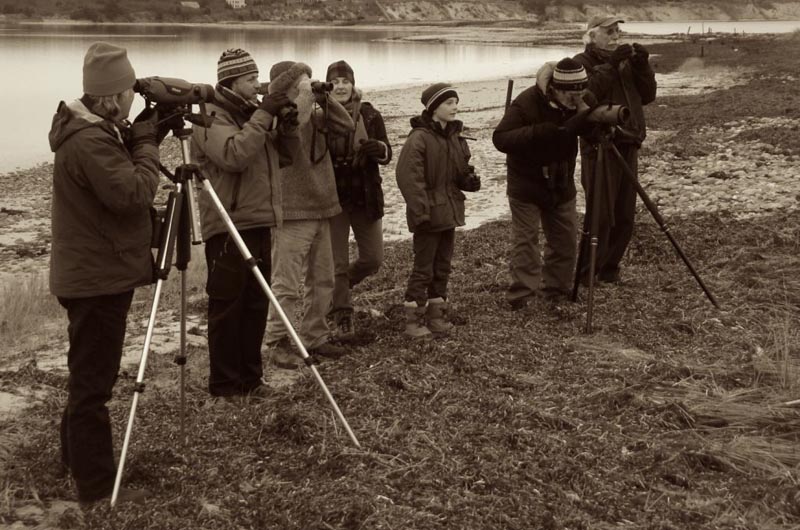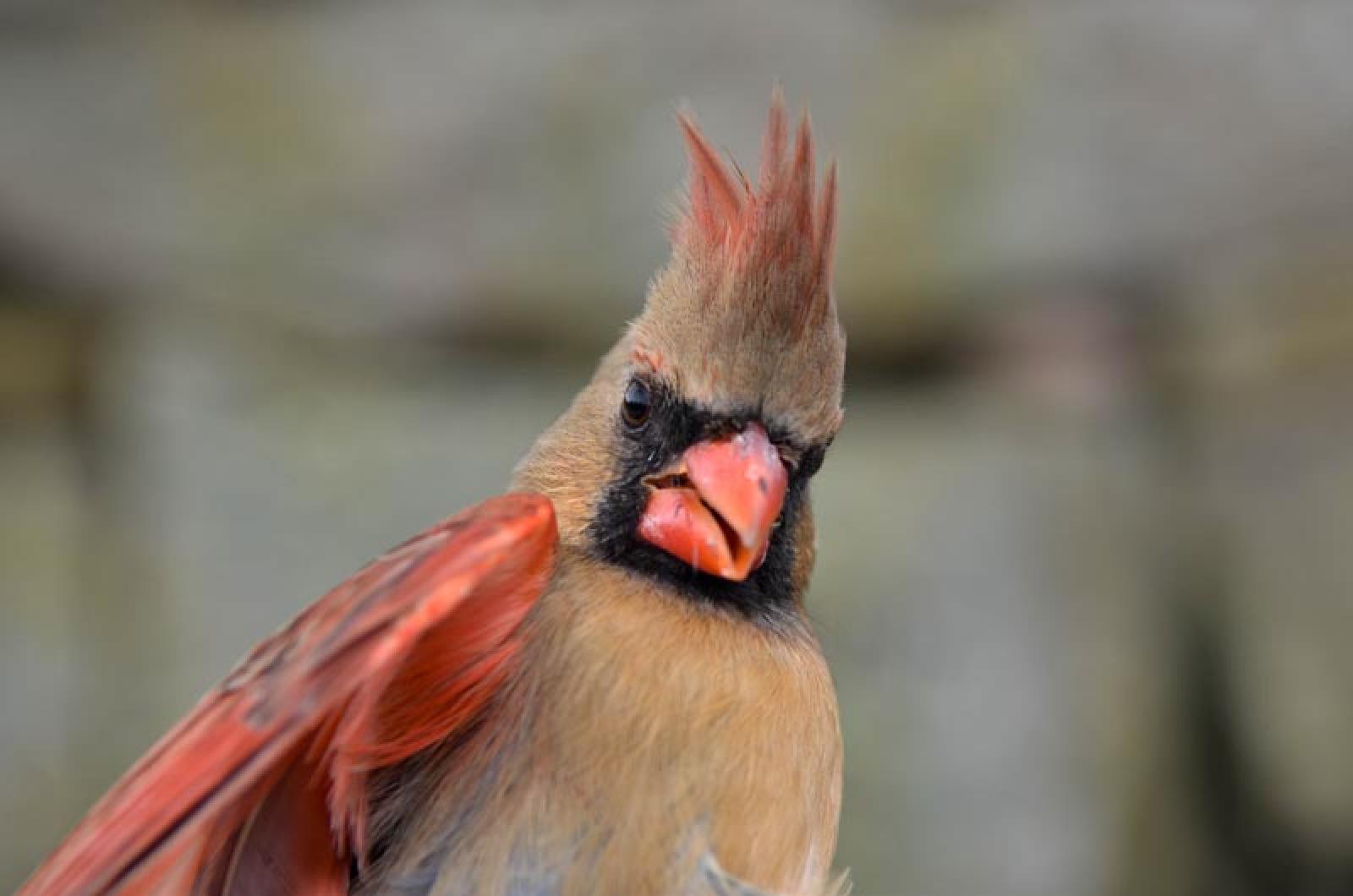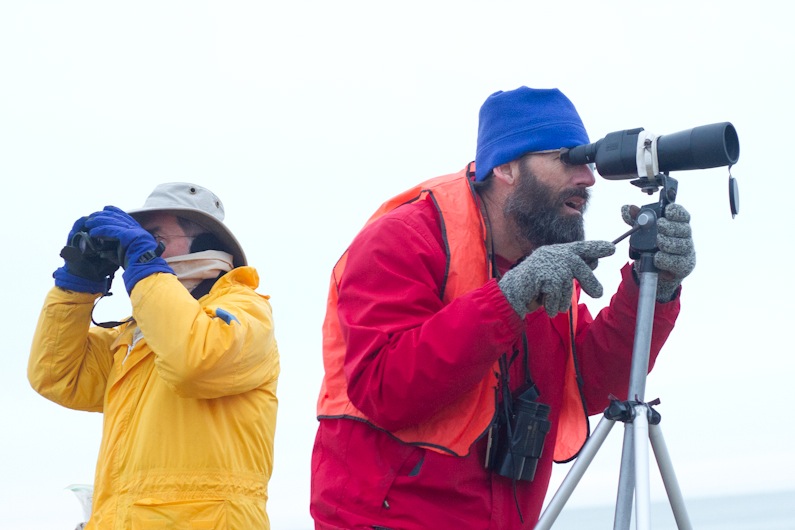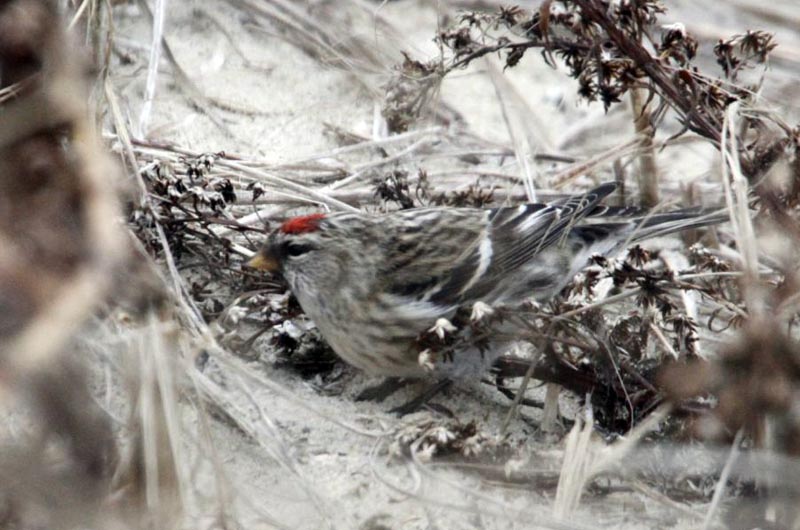Whit Manter and Tim Spahr drove beneath a full moon in the very early hours of Saturday morning, heading for the State Forest. It was 3 a.m. when they arrived at their destination. As soon as they stepped out of the car, they heard an unmistakable sound. Hoo. Hoo hoo hoo.
“All of the pine trees…it’s one of the most dependable places for sawhet and screech owls,” Mr. Manter said on Saturday evening after the 53rd Annual Martha’s Vineyard Christmas Bird Count had come to a close. But the hooting Saturday morning wasn’t a saw-whet or screech owl. It was a great horned owl, one of four that was overheard during the earliest portion of the Bird Count — the owling hours.
Rob Culbert, Greg Palermo and John Clark were also out prowling during the owling hours. They stood in the parking lot of Long Point Wildlife Refuge, still a half hour before sunrise, listening to the distinctive rolling trill of a screech owl. Eleven screech owls were recorded on Saturday.
The Christmas Bird Count is a continent-wide effort to take an avian census. The first count was held on Christmas Day in 1900, and was a marked shift from previous informal censuses, when birds would be shot first and counted later. Now, there are over 2,000 counts held across North America between Dec. 14 and Jan. 5. Volunteer birdwatchers fan out across a 15-mile circular swath – the Vineyard’s includes the Atlantic Ocean – and take note of every single bird they see during the day. Backyard birders are encouraged to take particular note of how many birds come to their feeders. These sightings are phoned in to Felix Neck.

At the end of the day, the birders return to the Wakeman Center off Lambert’s Cove Road where they tally their sightings and pool their data into a massive spreadsheet on Mr. Culbert’s computer. Mr. Culbert has been participating in the count since 1978, and has been its official compiler since 1993.
This year, 121 individual species were spotted by the 14 feeder-watchers and 60 official birdwatchers, up from 119 last year. Birders came from near and far to participate in the count. Susan Whiting, one of the organizers, is in charge of finding housing for those who come from off-Island. Lambrecht Kok, of the Netherlands, participated in his second Vineyard Bird Count and brought along a hard-bound photo album of the 2010 count. Mr. Kok said he has spent Christmas on the Island for the past four years, but the day of the count doesn’t always coincide with his visit. He spent the day with a group at Seven Gates, as did Bob Woodruff, who said he’s been doing the count for “at least half a century.”
Mr. Woodruff said the highlight of his day was spotting a razor-billed gull swimming in a pool of water near the tideline, darting amongst the rocks in pursuit of prey. Bird sightings were a bit more difficult because of the overcast conditions Saturday, he said, but the low wind kept many birds out and about until the rain started later in the day.
Saturday’s count was “brilliant,” said co-compiler Penny Uhlendorf. “It was a very, very good day in spite of the weather.” Ms. Uhlendorf’s own yard was home to the rarest find of the day, an Allen’s hummingbird that has been seen at her home feeder since late November. The hummingbird is a Pacific coast species.
Although the Allen’s hummingbird was the only one of its kind spotted on Saturday, record high numbers were noted for several species, including white-breasted nuthatch, chipping sparrows, juncos and redwing blackbirds. Still, the tally at the Wakeman Center was often punctuated by murmurs of “that’s low.” Over 1300 eiders were recorded during the day, for example, but Mr. Culbert and many of the other birders remember when over 30,000 of the waterfowl could be seen in massive flocks off of Gay Head.
Local data from the individual counts is sent to the National Audubon Society, which crunches the numbers to spot population trends on a continent-wide basis. The Carolina wren, which Mr. Culbert and his group observed at Long Point, was once found primarily in the southeastern United States. Since the late 1970s its range has broadened to include the northeast as well, a move that was largely documented thanks to the findings of the Christmas Bird Count.
“That’s data you can’t get if you don’t have this volunteer effort,” Mr. Culbert said.









Comments (2)
Comments
Comment policy »